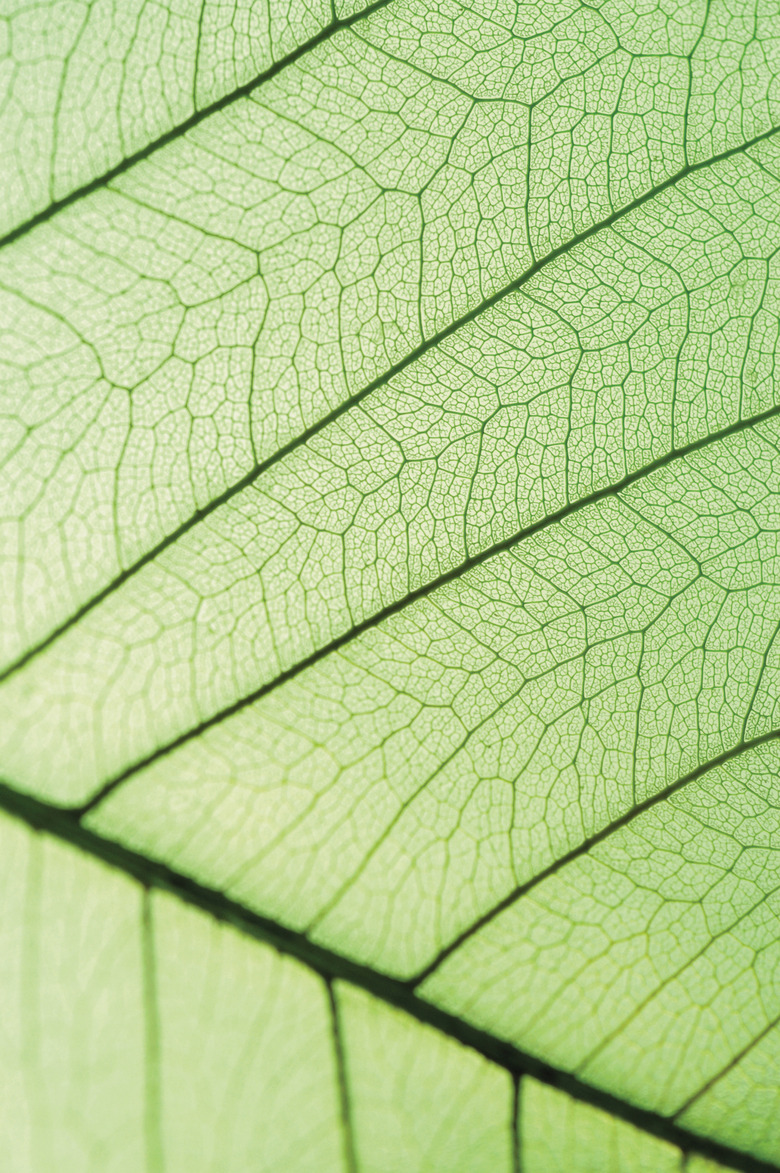What Is The Disk-Like Structure In The Side Of Chloroplasts?
Chloroplasts are membrane-bound organelles present in green plants and algae. They contain chlorophyll, the biochemical used by plants for photosynthesis, which converts the energy from light into chemical energy that powers the plant's activities.
In addition, chloroplasts contain DNA and help an organism synthesize proteins and fatty acids. They contain disk-like structures, which are membranes called thylakoids.
Chloroplast Basics
Chloroplast Basics
Chloroplasts measure about 4 to 6 microns in length. The chlorophyll within chloroplasts makes plants and algae green. In addition to the thylakoid membranes, each chloroplast has an outer and inner membrane, and some species have chloroplasts with additional membranes.
The gel-like liquid inside a chloroplast is known as stroma. Some species of algae have a cell wall between the inner and outer membranes composed of molecules containing sugars and amino acids. The chloroplast's interior contains various structures, including DNA plasmids, the thylakoid space, and ribosomes, which are tiny protein factories.
Origin of the Chloroplast
Origin of the Chloroplast
It's believed that chloroplasts, and the somewhat related mitochondria, were once their own "organisms", so to speak. Scientists believed that sometime in the early history of life, bacteria-like organisms engulfed what we know as chloroplasts and incorporated them into the cell as an organelle.
This is called the "endosymbiotic theory". This theory is supported by the fact that chloroplasts and mitochondria contain their own DNA. This is likely "leftover" from a time when they were their own "organisms" outside of a cell.
Now, most of this DNA isn't used, but some chloroplast DNA is essential for thylakoid proteins and functions. There are an estimated 28 genes in chloroplasts that allow it to function normally.
Thylakoid Definition
Thylakoid Definition
Thylakoids are flat, disk-like formations found in the chloroplast. They look similar to stacked coins. They're responsible for ATP synthesis, water photolysis and are a component of an electron transport chain.
They can also be found within cyanobacteria as well as in plant and algae chloroplasts.
Thylakoid Space and Structure
Thylakoid Space and Structure
Thylakoids float freely within the chloroplast's stroma in a place called the thylakoid space. In higher plants, they form a structure called a granum that resembles a stack of coins 10 to 20 high. Membranes connect different grana to each other in a helical pattern, though some species have free-floating grana.
The thylakoid membrane is composed of two layers of lipids that might contain molecules of phosphorus and sugar. Chlorophyll is embedded directly in the thylakoid membrane, which encloses the watery material known as the thylakoid lumen.
Thylakoids and Photosynthesis
Thylakoids and Photosynthesis
A thylakoid's chlorophyll component is what makes photosynthesis possible. This chlorophyll is what gives plants and green algae their green coloring. The process begins with the splitting of water to create a source of hydrogen atoms for energy production, while oxygen is released as a waste product. This is the source of the atmospheric oxygen we breathe.
The subsequent steps use the liberated hydrogen ions, or protons, along with atmospheric carbon dioxide to synthesize sugar. A process called electron transport makes energy-storage molecules such as ATP and NADPH. These molecules power many of the organism's biochemical reactions.
Chemiosmosis
Chemiosmosis
Another thylakoid function is chemiosmosis, which helps maintain an acidic pH in the thylakoid lumen. In chemiosmosis, the thylakoid uses some of the energy provided by electron transport to move protons from the membrane to the lumen. This process concentrates the proton count in the lumen by a factor of about 10,000.
These protons contain energy that is used to convert ADP to ATP. The enzyme ATP synthase helps this conversion. The combination of positive charges and proton concentration in the thylakoid lumen creates an electrochemical gradient that provides the physical energy necessary for ATP production.
Cite This Article
MLA
Finance, Eric Bank, MBA, MS. "What Is The Disk-Like Structure In The Side Of Chloroplasts?" sciencing.com, https://www.sciencing.com/disklike-structure-side-chloroplasts-17511/. 21 May 2019.
APA
Finance, Eric Bank, MBA, MS. (2019, May 21). What Is The Disk-Like Structure In The Side Of Chloroplasts?. sciencing.com. Retrieved from https://www.sciencing.com/disklike-structure-side-chloroplasts-17511/
Chicago
Finance, Eric Bank, MBA, MS. What Is The Disk-Like Structure In The Side Of Chloroplasts? last modified March 24, 2022. https://www.sciencing.com/disklike-structure-side-chloroplasts-17511/
